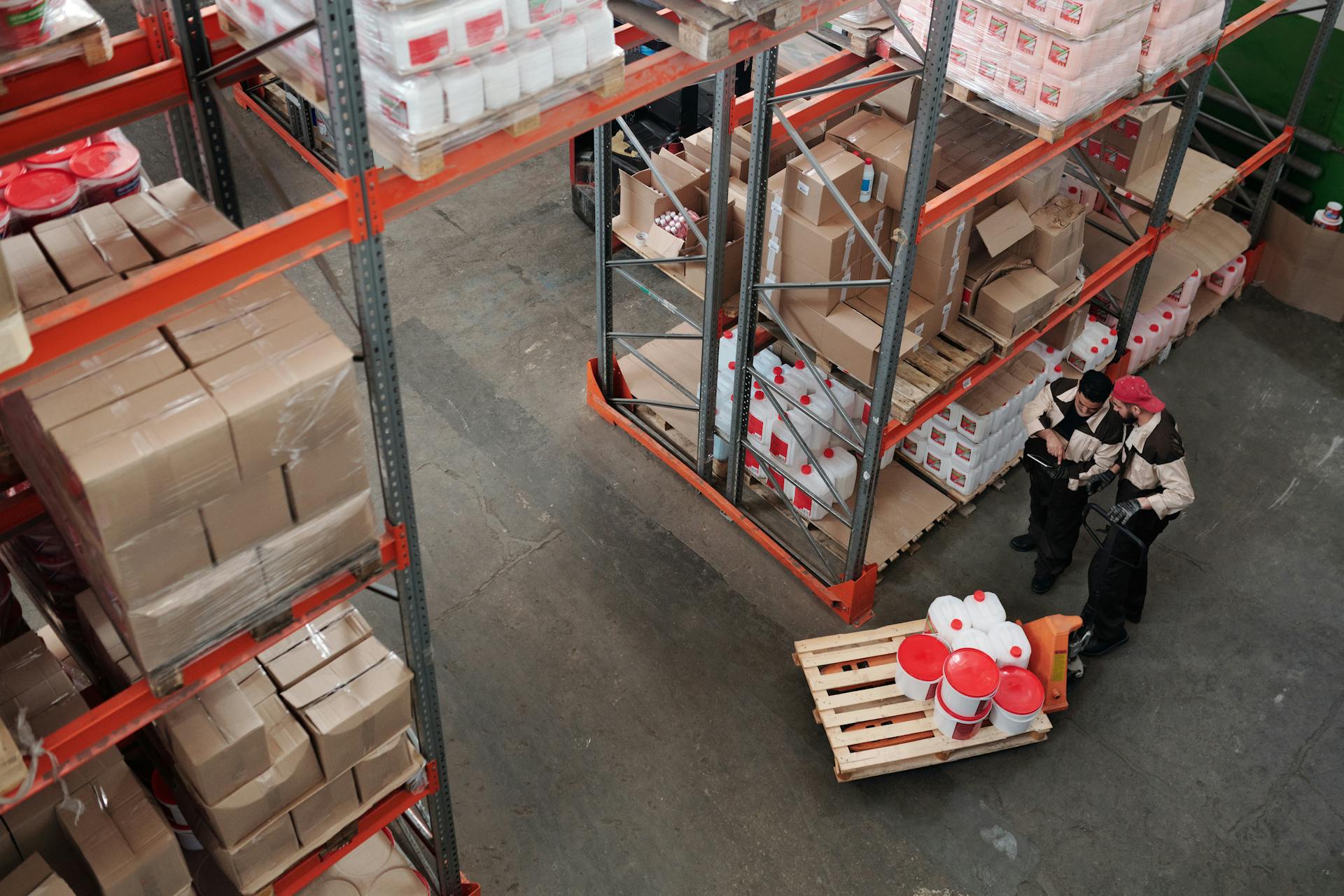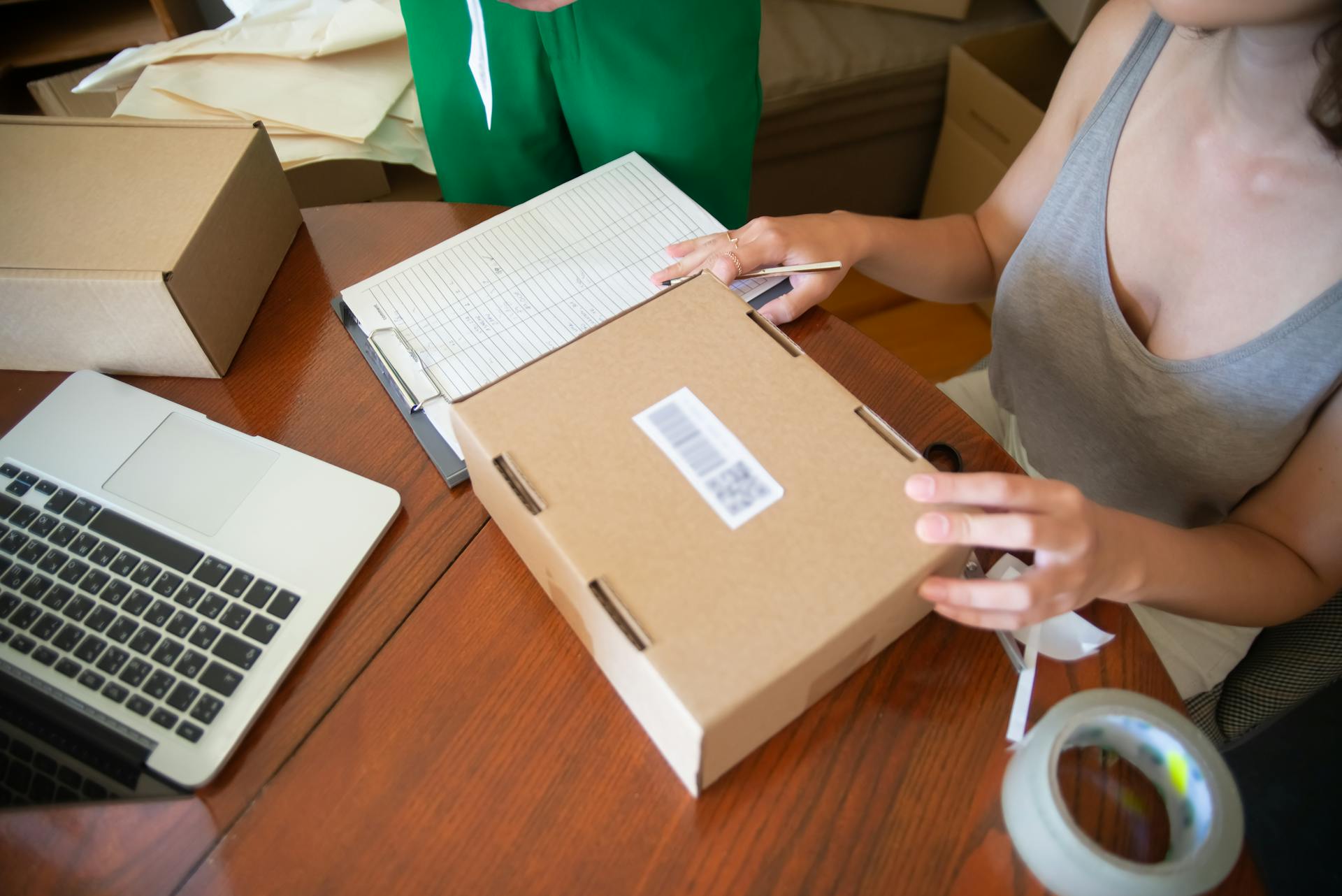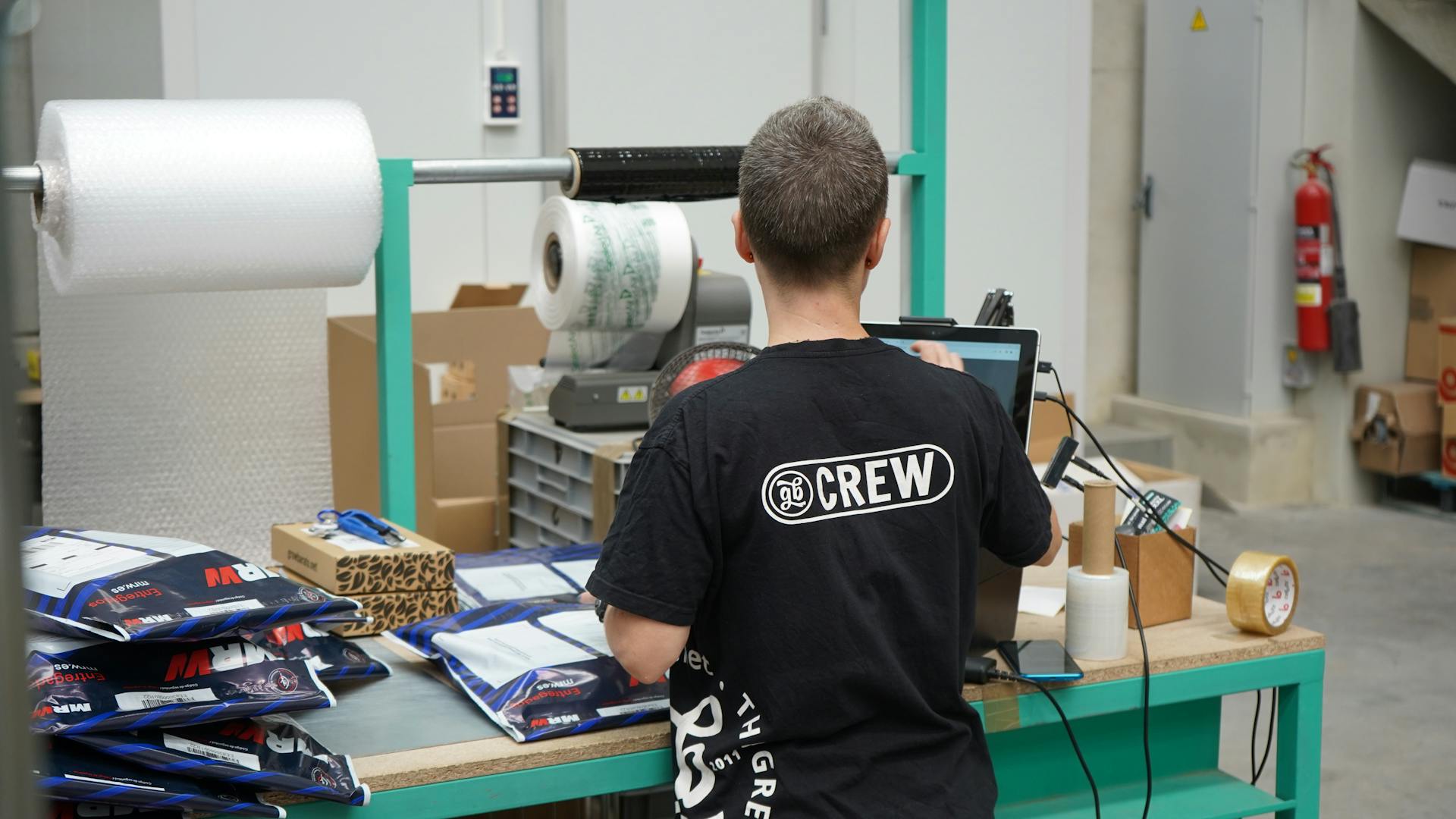
A well-managed transportation system is crucial for efficient supply chain operations. It can help reduce costs, improve delivery times, and increase customer satisfaction.
By implementing a 3PL transportation management system, businesses can automate many of their transportation processes, such as load planning and route optimization. This can lead to significant cost savings and improved efficiency.
According to our research, a 3PL transportation management system can help reduce transportation costs by up to 15% by optimizing routes and loads. This can have a significant impact on a company's bottom line.
What Is a Transportation System?
A Transportation Management System (TMS) is a software solution that helps businesses plan, execute, and optimize the movement of goods.
It provides full visibility into logistics operations, enhancing supply chain management. Key features include carrier selection and communication, shipment tracking and documentation, freight billing and auditing, and performance tracking and analytics reporting.
A TMS system is like a comprehensive tool for managing transportation, able to integrate with other systems like Enterprise Resource Planning (ERP) and Warehouse Management Systems (WMS).

Many retailers, manufacturers, and distributors use TMS for 3PLs to benefit from more efficient shipment routing, cost-effective carrier selection, improved data-driven supply chain optimization, and real-time shipment visibility.
Here are some of the key benefits of using a TMS system:
- More efficient shipment routing
- Cost-effective carrier selection
- Improved data-driven supply chain optimization
- Real-time shipment visibility
Challenges and Solutions
Challenges in logistics operations include inefficient manual processes for scheduling and tracking.
These processes can lead to errors and delays, ultimately affecting the overall performance of the supply chain.
Revenova TMS eliminates these inefficient manual processes, providing a more streamlined and organized approach to logistics operations.
By using a comprehensive 3PL and 4PL TMS platform, logistics service providers can record planning, movement, and shipments of loads in one place, making it easier to make informed decisions.
This helps improve future performance and reduces the risk of errors and delays.
Transportation Management System Features
A Transportation Management System (TMS) has several key features that make it a valuable tool for businesses.
Carrier selection and communication, shipment tracking and documentation, freight billing and auditing, and performance tracking and analytics reporting are all part of a TMS system.
These features enable businesses to gain full visibility into their logistics operations, enhancing their supply chain management.
Here are some of the key features of a TMS system in a quick reference format:
- Carrier selection and communication
- Shipment tracking and documentation
- Freight billing and auditing
- Performance tracking and analytics reporting
Modules

With Botlrics' DataHub, you can reduce manual activities and streamline your process with standardly available transport integrations, including route planning systems, financial systems, other software applications, or external carriers.
Manual activities can be a real pain, and they take up a lot of time that could be spent on more important things.
Botlrics' DataHub helps you integrate with various systems, making it easier to manage your transportation needs.
This integration can help you avoid common transportation headaches, such as traffic jams and rising fuel costs.
By automating your process, you can focus on more strategic tasks and make your business more efficient.
Standard Transport Integrations
Standard Transport Integrations are a game-changer for businesses looking to streamline their logistics operations.
With the right integrations, you can reduce manual activities and automate many processes, freeing up time and resources for more strategic tasks.
Botlrics’ DataHub offers a range of out-of-the-box integrations with popular systems, including route planning software, financial systems, and external carriers.
This can save you countless hours of manual data entry and reduce errors caused by human mistakes.
Some of the key integrations available with DataHub include:
- Route planning systems
- Financial systems
- Other software applications
- External carriers
By integrating these systems, you can get a more comprehensive view of your logistics operations and make data-driven decisions to optimize your supply chain.
Features for Companies
A Transportation Management System (TMS) is a powerful tool for optimizing logistics operations. It helps businesses plan, execute, and optimize the movement of goods.
With a TMS, you can integrate all your E-commerce Platforms, ERP systems, CRM tools, WMS setups, and financial software to eliminate data discrepancies. This integration enables you to manage relationships across multiple partners and stakeholders.
A TMS system also provides key features such as carrier selection and communication, shipment tracking and documentation, freight billing and auditing, and performance tracking and analytics reporting. These features help you gain full visibility into your logistics operations.
By leveraging a TMS, you can enjoy the benefits of optimized transportation routes, improved logistics optimization, access to expert supply chain management teams, and scalable solutions for growing businesses. These benefits can help you reduce shipping costs, improve delivery times, and scale operations efficiently.
Here are some of the key features of a TMS that can help your business:
- Carrier selection and communication
- Shipment tracking and documentation
- Freight billing and auditing
- Performance tracking and analytics reporting
These features can help you make data-driven decisions and optimize your supply chain management. By combining a TMS with 3PL transportation management, you can create a powerful synergy that can transform your logistics operations.
CRM Features
A Transportation Management System (TMS) is not just about managing transportation, it's also about managing your customers. You need to have a good CRM system in place to keep track of your clients and their needs.
A CRM system helps you organize your client information, documents, and connections. This is especially important in the third-party logistics sector, where you need to interact and cooperate with clients effectively.
With a CRM system, you can obtain critical client information, documents, and connections. This includes accounts and contact management, which is essential for any business.
Here are some key CRM features to look out for:
- Accounts and Contact Management: Obtain critical client information, documents, and connections to interact and cooperate with clients effectively.
- Salesforce-Native Solution: Leverage the robust functionalities, adaptability, and security that make Salesforce the world's #1 CRM platform.
- Activity Management: Organize tasks, keep informed with reminders, and initiate custom workflows based on logistics events.
Having a CRM system that is mobile-ready is also a must. This allows you to access your client information and manage your relationships on the go.
System Components

A 3PL transportation management system (TMS) is a comprehensive tool for managing transportation, integrating with other systems like Enterprise Resource Planning (ERP) and Warehouse Management Systems (WMS).
Key components of a TMS include carrier selection and communication, shipment tracking and documentation, freight billing and auditing, and performance tracking and analytics reporting.
Carrier selection and communication is a crucial feature of a TMS, allowing businesses to choose the best carrier for their needs and communicate effectively with them.
Shipment tracking and documentation provides real-time visibility into shipments, while freight billing and auditing helps ensure accurate and timely payment.
Performance tracking and analytics reporting enables businesses to optimize their supply chain management and make data-driven decisions.
Here are the key features of a TMS system in a concise list:
- Carrier selection and communication
- Shipment tracking and documentation
- Freight billing and auditing
- Performance tracking and analytics reporting
Order Fulfillment and Logistics
Effortless scaling of user capacity is a key benefit of a 3PL transportation management system, allowing businesses to adapt to changing demands without impacting contract duration.
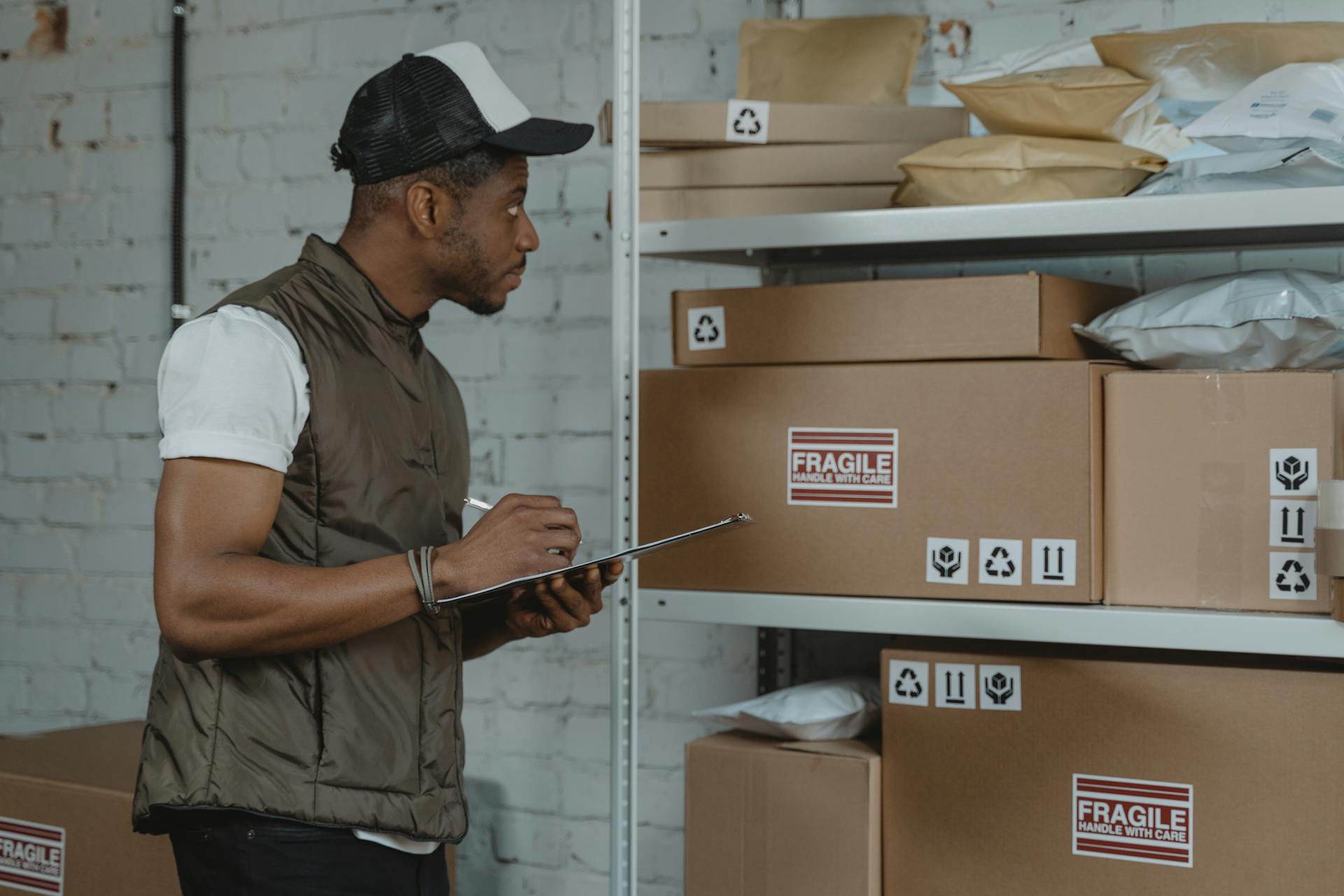
Neurored's 3PL software provides a range of features to enhance logistics operations, including email integration, unified order management, and robust document management.
With features like streamlined pick and pack, expedited shipping operations, and automated shipping label generation, 3PLs can guarantee quicker turnarounds, reduced overheads, and an elevated customer experience.
Here are some key benefits of Neurored's 3PL software:
- Email Integration (Outlook/ Gmail): Catalog customer communications effortlessly, equipping your team with the necessary context for a seamless customer journey.
- Unified Order Management: Integrate inbound and outbound orders fluidly with all 3PL logistics functions.
- Automated Shipping Label Generation: Simplify your workflow by generating customized shipping labels without switching between platforms.
By leveraging these features, 3PLs can optimize their operations, improve customer satisfaction, and stay ahead of the competition.
Order Fulfillment
Order Fulfillment is a critical component of the logistics process, and it's essential to have a system in place that can handle it efficiently.
A Transportation Management System (TMS) can help streamline order fulfillment by providing real-time visibility into logistics operations, enhancing supply chain management.
With a TMS, you can automate tasks such as carrier selection and communication, shipment tracking and documentation, freight billing and auditing, and performance tracking and analytics reporting.
This can lead to more efficient shipment routing, cost-effective carrier selection, improved data-driven supply chain optimization, and real-time shipment visibility.

For 3PLs, a TMS can be a game-changer, allowing them to manage transportation, integrate with other systems, and provide a comprehensive tool for managing logistics.
Some key features of a TMS include:
- Carrier selection and communication
- Shipment tracking and documentation
- Freight billing and auditing
- Performance tracking and analytics reporting
By leveraging a TMS, businesses can gain a competitive edge, improve customer satisfaction, and reduce costs.
In addition to a TMS, other tools such as Order Management Software (OMS) can also help with order fulfillment, providing features such as email integration, unified order management, and robust documents management.
An OMS can help 3PLs streamline their logistics operations, enhance customer experiences, and improve overall efficiency.
By automating tasks such as pick and pack, shipping label generation, and invoicing, an OMS can help reduce errors, increase productivity, and improve customer satisfaction.
Ultimately, the key to successful order fulfillment is having a system in place that can handle it efficiently, and leveraging tools such as TMS and OMS can help businesses achieve this goal.
Bouw Logistic Services

Bouw Logistic Services has found that with 3PL Dynamics, they can easily configure processes themselves, allowing them to act on new customer wishes more quickly.
This flexibility is key to delivering excellent customer service and staying competitive in the market.
Benefits and Advantages
Combining TMS and 3PL transportation management can transform your logistics operations.
By integrating TMS supply chain capabilities with 3PL transportation management, businesses can enjoy optimized transportation routes with TMS for 3PLs.
This integrated approach allows businesses to reduce shipping costs and improve delivery times.
Companies can also access expert supply chain management teams, which can be a huge advantage for those who need guidance.
Here are some specific benefits of combining TMS and 3PL:
- Optimized transportation routes with TMS for 3PLs
- Improved logistics optimization in 3PL
- Access to expert supply chain management teams
- Scalable solutions for growing businesses
With this integrated approach, businesses can scale operations efficiently and make the most of their resources.
Digitalization and Technology
A 3PL transportation management system is only as effective as the technology behind it. 3PLs generally use a robust TMS that they know inside and out.

These systems are designed to integrate with various tools and networks, allowing 3PLs to access shipper networks and leverage technologies to their advantage. This level of integration is crucial for efficient logistics operations.
One key feature of a TMS is its ability to track vehicles and consignments in real-time. This enables 3PLs to optimize planning, prevent theft, and improve customer dispatch tracking.
A well-designed TMS also provides dynamic dashboard views that offer real-time tracking of KPIs across various logistics functions. This allows 3PLs to quickly identify bottlenecks and capitalize on opportunities.
Automated analysis and reports are another essential feature of a TMS. These tools uncover the nuances of 3PL operations, providing data on rates, transit times, service provider metrics, and more.
Proactive forecasting is also a valuable feature of a TMS. By leveraging historical data, 3PLs can anticipate future trends and ensure their logistics strategy is always one step ahead.
In addition to these features, a TMS can also provide a multi-modal freight overview, allowing 3PLs to optimize their logistics operations across all transport modes. This includes real-time docking and dispatch management.
Here are some key benefits of a TMS:
- Real-time tracking of KPIs
- Automated analysis and reports
- Proactive forecasting
- Multi-modal freight overview
- Integration with various tools and networks
By leveraging these features and benefits, 3PLs can improve their logistics operations and provide better service to their customers.
Customization and Outsourcing
Customizing a TMS can be a highly complex task, requiring a team of core experts and a dedicated budget. You'll need both IT experts and transportation supply chain specialists to support each core functionality with niche expertise.
Some common challenges with customization include fully integrating the TMS into existing enterprise-level systems and training staff to manage key functionalities. These challenges can be overcome with the right in-house expertise and education.
If you don't have the necessary in-house skills and resources, consider outsourcing to a 3PL. They have the logistics expertise, industry connections, and technologies you likely don't have in-house. By working with a 3PL, you can leverage their expertise and avoid the common challenges associated with customization.
To choose the right 3PL, start by self-evaluating your current operations and identifying what you need as an organization. Ask yourself questions like: "Do we tender loads today?" and "Do we value robust tracking?" This will help you determine what functionalities are "must-haves" and what you should look for in a 3PL.
There Are Endless Ways to Customize
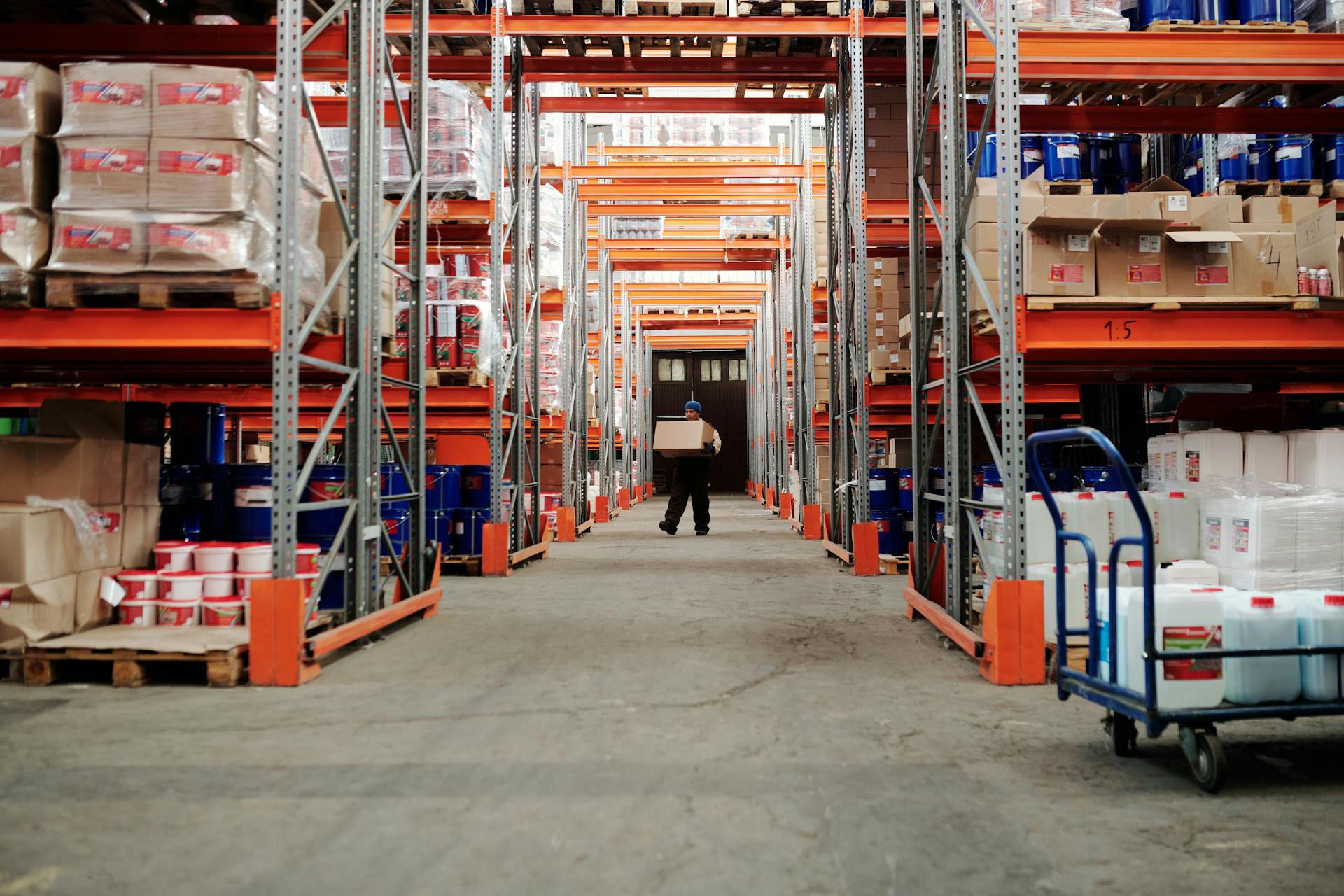
Customization and outsourcing are two sides of the same coin. If you're looking for a highly custom system that can address your unique needs, many niche systems and capabilities can be bolted on to your TMS.
This is exactly what Neurored's 3PL Software does, offering features like Freight Rate Comparison, Transport Booking Options, and Real-time Delivery Updates through its self-serve capabilities.
A TMS is basically an elaborate execution tool, and your organization needs the right in-house skills and resources to properly use it. At ODW Logistics, we've seen customers struggle with implementing and using their TMS due to a lack of in-house experts and IT staff.
Some common challenges include fully integrating the TMS into existing enterprise-level systems, getting complex rates into the TMS, and training staff to manage key functionalities like appointment setting and load building.
Here are some of the common challenges companies face when trying to use a TMS without the right in-house expertise:
- Fully integrating the TMS into existing enterprise-level systems.
- Getting complex rates into the TMS and finding the right carriers.
- Training staff to manage key functionalities like appointment setting, load building, and contract management.
- Using key functionalities altogether.
- Accessing TMS product expertise from an IT transportation perspective.
- Receiving timely data related to benchmarking and market conditions.
The Case for Outsourcing

Outsourcing can be a game-changer for businesses, especially when it comes to logistics.
Working with a 3PL is like working with an intermediary that has all of the logistics expertise, industry connections, and technologies you likely don't have in-house.
This can save you a lot of time and money by leveraging their expertise and resources.
By outsourcing to a 3PL, you can tap into their network of suppliers and carriers, giving you access to a wider range of options.
Their industry connections can also help you navigate complex regulations and ensure compliance.
Outsourcing can be a great way to scale your business quickly and efficiently, without having to invest in new infrastructure or hire more staff.
Expertise
A 3PL team is comprised of supply chain experts who have seen it all, working with companies of various sizes in multiple industries. They have a wealth of experience approaching challenges in different ways to fit each situation.

3PLs have access to an immense amount of real-time and historical industry data, which is continually being compiled in their TMS as they work with customers over time. This data allows them to benchmark pricing data against the rest of the marketplace to assess the competitiveness of your pricing.
A 3PL will combine expertise, access to data, and technology to provide a total package to you, the shipper, whereas a TMS provider cannot.
Choosing a Provider
Before choosing a 3PL provider, it's essential to self-evaluate your current operations to determine what you need as an organization. Ask yourself internal questions like: Do we tender loads today? Do we have our own carriers? Do we use brokers? Do we work with carriers directly? Do we value robust tracking? What other modules and functionalities are "must-haves"? How big is our transportation spend annually?
To get the most out of your 3PL provider, it's crucial to ask the right questions. Instead of asking yes/no questions, ask for explanations, like "Can you explain your claims management?" You should also ask about the provider's account management structure, support hours, TMS tools, and services offered.

Some core questions to ask all 3PLs include: Will I have a dedicated account manager? What TMS tools do you use? What services can you provide and what technologies do you use to provide them? Will I have access to an online portal system? If so, what tools and data will I be able to access within it?
Contract Agreements
When choosing a provider, it's essential to consider the contract agreements they have in place. Specify tariff agreements with customers and subcontractors with each preferred calculation method, as mentioned in the contract & tariff agreements section.
This ensures transparency and clarity in billing and payments. It's crucial to have a clear understanding of how costs will be calculated and what you can expect to pay.
Having a preferred calculation method can save you time and money in the long run. By specifying it in the contract, you can avoid any misunderstandings or disputes down the line.
Regularly reviewing and updating contract agreements is also vital. This will help you stay on top of any changes in the market or industry that may impact your costs or services.
Choosing an Outsourced Provider

Before you start looking for an outsourced provider, it's essential to evaluate your current operations and identify what you need as an organization.
Self-evaluation is key to understanding your requirements. You should ask internal questions like: Do you tender loads today? Do you have your own carriers? Do you use brokers? Do you work with carriers directly? What other modules and functionalities are must-haves?
Your self-evaluation will help you determine what to ask a TMS software provider. It's like having a shopping list, making it easier to find the right provider.
You should be direct and comprehensive when asking questions to a TMS software provider. Instead of asking yes/no questions, ask for explanations. For example, instead of asking "Does your TMS have claims management functionality?", ask "Can you explain your claims management?".
Here are some crucial questions to ask all 3PLs you're vetting, regardless of your exact needs:
- Will I have a dedicated account manager?
- What does your account management structure look like and at what hours of the day will support be accessible?
- What TMS tools do you use?
- Why do you use this TMS?
- What services can you provide and what technologies do you use to provide them?
- Will I have access to an online portal system? If so, what tools and data will I be able to access within it?
By asking these questions, you'll get a better understanding of the provider's capabilities and whether they're a good fit for your organization.
Related Topics
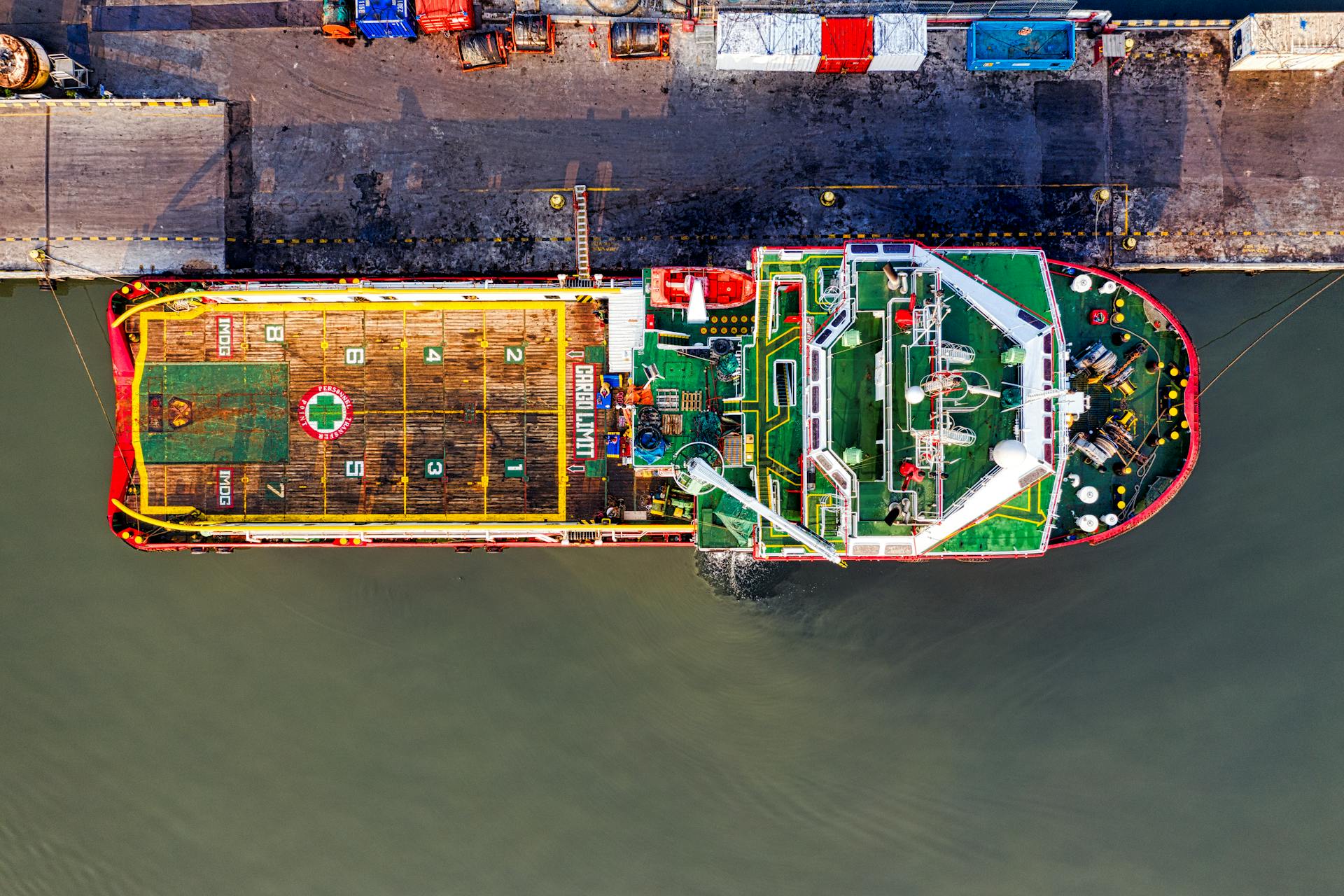
If you're looking to optimize your logistics operations, consider leveraging a Price Optimization and Management Software that can help with Freight Rates, Tendering, Quotation, and Shipment Execution.
This type of software can provide real-time visibility into your logistics operations, allowing you to make data-driven decisions and maximize supply chain productivity.
Managing gating, teams, and inventory across warehousing, stevedoring, and terminal operations is crucial for achieving end-to-end logistics visibility.
Optimizing your pickup-to-delivery network across order consolidation, transport dispatch, cross-docking, warehousing, and last-mile delivery can significantly improve your logistics efficiency.
By streamlining these processes, you can reduce costs, improve delivery times, and enhance customer satisfaction.
Frequently Asked Questions
What is the best TMS software?
There is no single "best" TMS software, as the top options include 3Gtms, e2open, Descartes, Blue Yonder, Manhattan, MercuryGate, Oracle, and SAP, each offering unique features and benefits. To find the best TMS for your business, consider your specific needs and goals.
Sources
- https://kingsolutionsglobal.com/blog/how-using-tms-3pl-benefit-your-supply-chain/
- https://www.boltrics.com/en/solutions/tms-transport-management-software/
- https://www.neurored.com/3pl-software/
- https://www.odwlogistics.com/resources/use-in-house-tms-or-3pl-outsourced-partner
- https://revenova.com/tms-for-logistics-service-providers-lsp-3pl/
Featured Images: pexels.com
